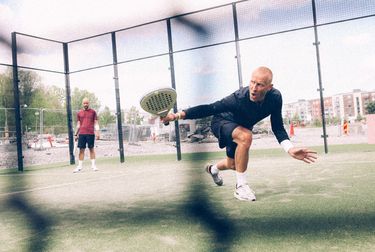

The Evolution of Racquetball and Squash Courts A Journey of Design and Functionality
Racquetball and squash are fast-paced, exhilarating sports that have captured the hearts of many around the world. While the games themselves are thrilling, the environment in which they are played significantly contributes to the overall experience. This is where the importance of high-quality courts comes to play. The design and construction of racquetball and squash courts have evolved immensely over the years, reflecting advancements in technology, materials, and the growing popularity of these sports.
Understanding the Sports
Both racquetball and squash have their unique characteristics. Racquetball is played in a four-wall court where the objective is to hit the ball in such a way that the opposing player cannot return it. The game's pace is quick, requiring players to be agile and skilled. On the other hand, squash is typically played in a smaller court, emphasizing agility, strategy, and precision. The ball is bounced against the front wall, and players must navigate their shots around both their opponent and the walls.
The Evolution of Court Design
1. Historical Context The origin of squash can be traced back to the 1830s in England, with racquetball emerging later in the 1950s in the United States. The early courts were basic, often built with improvised materials and limited design considerations. As the popularity of these sports grew, so did the need for specialized courts that could enhance players' performance and provide a better overall experience.
2. Building Materials and Technology Modern racquetball and squash courts are constructed using advanced materials designed to create optimal playing surfaces. Traditional wood courts have become more common with the introduction of engineered wood, which provides consistent bounce and durability. Additionally, materials such as glass are now frequently used for walls, especially in squash, allowing spectators to view the action from multiple angles. This design not only improves aesthetic appeal but also enhances the overall experience for fans and players alike.
3. Acoustic and Lighting Considerations A crucial aspect of court design is sound and light management. Racquetball courts require specific acoustics to reduce echoing, which can disrupt gameplay, while squash courts benefit from natural lighting designs that create an appealing atmosphere. The careful placement of lighting ensures that the court is adequately lit without causing glare that could distract players.

The Role of Factories in Court Construction
The design and manufacturing of racquetball and squash courts are often carried out by specialized factories focused on sports infrastructure. These factories employ skilled professionals who understand the intricate needs of the sports. The production process involves meticulous planning and execution, ensuring that every dimension, surface material, and finishing touch aligns with regulatory standards and player expectations.
Moreover, innovations in manufacturing technology, such as prefabrication and modular construction, have transformed how courts are built. Prefabricated components allow for quicker assembly times, reducing costs while maintaining high-quality standards. Factories today use computer-aided design (CAD) software to create precise plans, enabling them to construct courts that meet both aesthetic and functional specifications.
The Future of Racquetball and Squash Courts
As racquetball and squash continue to grow in popularity worldwide, the need for innovative and accessible court designs will only increase. Future developments may include smart technology integration, such as sensors that track gameplay statistics or advanced lighting systems that mimic natural light to enhance player performance.
Additionally, the emphasis on sustainability will influence manufacturing processes. Eco-friendly materials and energy-efficient solutions are likely to become standard practices in court construction, aligning with global trends toward green building.
Conclusion
The evolution of racquetball and squash courts mirrors the growth of these sports. From humble beginnings to sophisticated modern facilities, courts have been designed to enhance every aspect of gameplay. As technology and materials continue to evolve, so too will the courts themselves, ensuring that players have the best possible environment in which to embrace the thrill of the game. Whether you are a seasoned player or a newcomer, the experience of stepping onto a high-quality court is undeniably memorable.
High-Performance Industrial Flooring Solutions China Paddle Tennis Court for Sale
High-Performance Industrial Flooring Solutions Durable & Cost-Effective
Homogeneous Transparent Floor – Durable & Stylish Rubber Floor Solutions
Premium Homogeneous Transparent Floor for Durable & Stylish Spaces Rubber Floor Solutions
Premium Sports Floor Solutions Durable PVC Sports Floor & Rubber Floor for Gyms
Durable Rubber Composite Floor Premium Rubber Floor & Mats Solutions